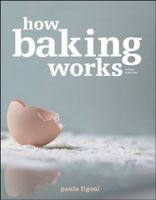Label
All
0
Clear all filters
🔥 Try our grilling cookbooks and save 25% on ckbk membership with code BBQ25 🔥
Questions for Review
Appears in
By Paula Figoni
Published 2003
- How much (in fractions or a percentage) of the edible part of an egg is egg white? How much is egg yolk?
- How many dozen eggs are in a flat?
- How do egg whites and egg yolks compare in moisture, lipids (fat and emulsifiers), and protein content?
- What is another name for egg white?
- Name an emulsifier present in egg yolks.
- Which component in egg yolk provides yellow color? Why might the color of yolk vary from one egg producer to another and throughout the season?
- Which component in whole eggs (fats, emulsifiers, proteins, water, minerals, etc.) provides structure or toughening? Which two components are considered tenderizers? Where is each of these components located (white, yolk, or both)?
- Explain how egg yolks can be considered structure builders, even though they contain tenderizers.
- Why do the FDA and the American Egg Board call eggs purchased in the shell “shell eggs” and not “fresh eggs”?
- What is meant by an “egg product”? What are the advantages of egg products over shell eggs?
- Why should egg products be used instead of shell eggs in uncooked buttercream or sorbet?
- Why is citric acid often added to frozen pasteurized whole eggs?
- Why is guar gum often added to frozen pasteurized egg whites?
- Why is sugar often added to frozen pasteurized egg yolks?
- Rank egg whites, egg yolks, and whole eggs from highest to lowest in each of the following functions: structure building and toughening, leavening, color, flavor, and emulsification.
- Why will the addition of extra egg whites (which are about 90 percent water) to cake batter sometimes produce a drier, rather than a moister, cake?
- How do sugars and fats affect the process of egg coagulation? That is, do they speed it up and increase the likelihood of curdling and toughening due to overcooking, or do they slow it down and decrease the likelihood of curdling and toughening?
- Which is better for producing the highest-quality baked custard: using an oven temperature that is slightly too high, or using one that is slightly too low? Explain.
- Besides producing softer and more tender custards, how else do fats (from cream and egg yolks, for example) affect the texture of custards?
- How is the volume of freshly whipped foam affected when steps are taken to increase stability? That is, as you increase the stability of whipped egg whites, will volume most likely increase, decrease, or stay the same?
- What is the difference between a hard meringue and a soft meringue? When is one used instead of the other?
- Briefly describe differences in the preparation of common, Swiss, and Italian meringues. Which is the most stable? Which is the least stable?
- What happens to the thickness of an egg white (and yolk) as it ages? How does this affect its ability to whip?
- How does sugar affect the stability of whipped egg whites? What happens when sugar is added too fast or too soon to whipping eggs?
- How do fats and egg yolks affect the ability of a meringue to form?
- How does acid affect the stability of whipped egg whites?
- What is the name of the acid that is most commonly added to egg whites as they are whipped?
- Provide six safety guidelines to follow when using eggs and egg products, and explain why each is important.
Advertisement
Advertisement
The licensor does not allow printing of this title


